Poetry: `The Tyger` by William Blake
advertisement
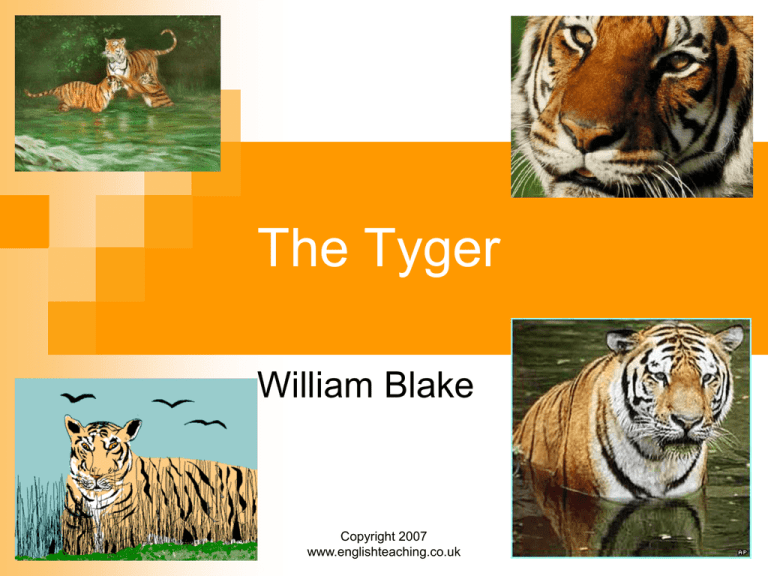
The Tyger William Blake Copyright 2007 www.englishteaching.co.uk Learning Objectives Understand and discuss the poem ‘The Tiger’ by William Blake (look for layers of meaning under the surface for their GCSE coursework) Will explore and ‘explode’ the poem using the five key questions to develop their responses using P.E.E where appropriate Students select appropriate quotations to support their responses to the poems and explain them. Copyright 2007 www.englishteaching.co.uk What words would you use to describe a tiger? Copyright 2007 www.englishteaching.co.uk Religion Working class background William Blake was an artist and an engraver. Blake wrote at the start of the industrial revolution Blake’s later poetry attempts to re-write the story of creation and the entire history of humanity Copyright 2007 www.englishteaching.co.uk Blake had radical , eccentric ideas. He pointed out what was wrong with the world as he saw it; he was considered by some to be mad. What is it about? ‘The Tyger’ is about how god creates all creatures on this earth. Although some may be peaceful and naive like the lamb, others are more ferocious and beautiful in their own way . The Speaker is asking ‘The Tyger’ who made him? Copyright 2007 www.englishteaching.co.uk Alliteration Initially a sensuous image Songs of Experience Our imaginations Tyger! Tyger! Burning bright, In the forests of the night, What immortal hand or eye Could frame thy fearful symmetry? Two halves the same: beauty and horror A speaker asking a fearsome tiger what could have created it? The same hand that created the the lamb. Copyright 2007 www.englishteaching.co.uk Where have your fiery eyes come from? In what distant deeps or skies Burnt the fire of thine eyes? On what wings dare he aspire? What the hand dare seize the fire? Relates to hell. Copyright 2007 www.englishteaching.co.uk Strength/burden knowledge Responsibility, power and strength of the creator And what shoulder, and what art, Could twist the sinews of thy heart? And when thy heart began to beat, What dread hand? And what dread feet? Tendons, veins, arteries of the heart to create such a 'creature' one must be extraordinary in both these things. Copyright 2007 www.englishteaching.co.uk The words here relate to industry. Blake may also have seen the industrial revolution as ‘the tyger’. Within this poem he is referring to strength of this revolution. What the hammer? What the chain? In what furnace was thy brain? What the anvil? What dread grasp Dare its deadly terrors clasp? Words relate to Ironmonger- tools Metaphor-picturing god as a blacksmith The rhythm suggests the banging of a blacksmiths tools Copyright 2007 www.englishteaching.co.uk Fallen angel Is it a work of art, is it a reflection of its creator? When the stars threw down their spears, And water'd heaven with their tears, Did he smile his work to see? Did he who made the Lamb make thee? Reminder: Contrast between experience and innocence, Tones of terror and awe at a being that could create the tiger as well Copyright 2007 as the lamb, www.englishteaching.co.uk Was he pleased with his work? He might be pleased although others may not be. A world containing both beauty and horror. Tyger! Tyger! burning bright In the forests of the night, What immortal hand or eye Dare frame thy fearful symmetry? Beautiful yet destructive. Suggests courage. He must have some courage to dare to create this ‘tyger’ Repetition to reinforce ideas Six four-line stanzas, uses pairs of rhyming couplets to create a sense of rhythm and continuity We are left in awe at the complexity of the creature Copyright 2007 www.englishteaching.co.uk S,Q, A Statement: The Tyger is effective because vivid imagery is created in the reader’s mind. Quote: ‘Tiger, Tiger, burning bright’ Analysis: This is effective because the reader can imagine a tiger prowling the forest at night. A threatening, yet beautiful tiger. The use of the word ‘burning’ creates a vivid orange colour in the reader’s mind. The word ‘burning’ also relates to fire and hell so the tiger really stands out in the dark forests. Copyright 2007 www.englishteaching.co.uk Now Put it all together: The Tyger is effective because vivid imagery is created in the reader’s mind. For example,‘ Tiger, Tiger, burning bright’ This is effective because the reader can imagine a tiger prowling the forest at night. A threatening, yet beautiful tiger. The use of the word ‘burning’ creates a vivid orange colour in the reader’s mind. The word ‘burning’ also relates to fire and hell so the tiger really stands out in the dark forests. Copyright 2007 www.englishteaching.co.uk ‘EXPLODE’ A POEM!! Using S,Q,A or P.E.E answer the following: 1. What is the poem about? Tell me a little bit about the poem in one or two sentences! (How do you know this?) Why do you think this?? 2. Who is speaking in the poem and who is the poet speaking to? 3. How does the poem put its message across? Think about: verses? Imagery? Choice of words? Techniques? Rhythm and Rhyme? Mood? 4. Imagine you are William Blake and tell me why you have written this poem in one paragraph. 5. What is YOUR Personal response to the poem? Do you think the poem is effective? Why? Copyright 2007 www.englishteaching.co.uk
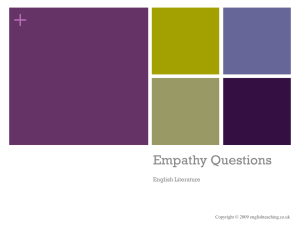
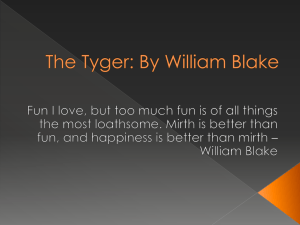
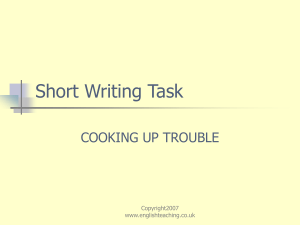
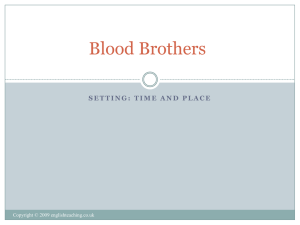
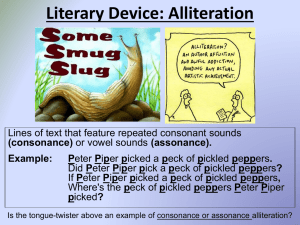
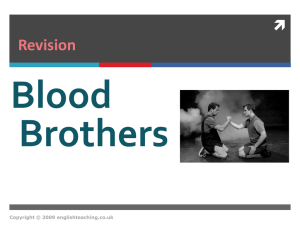

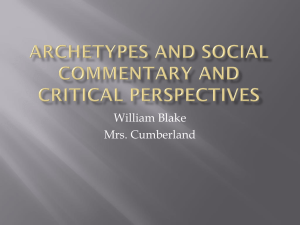
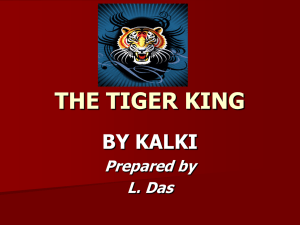




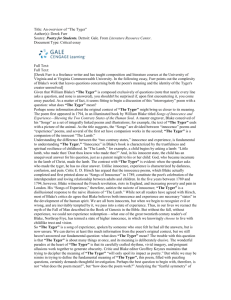
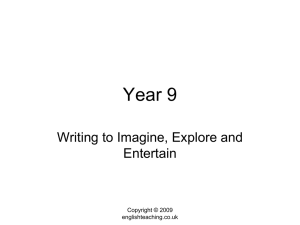
![languageacquisition[1]](http://s2.studylib.net/store/data/005811931_1-c258fc5685818e68ec33aa75d5bbfff5-300x300.png)